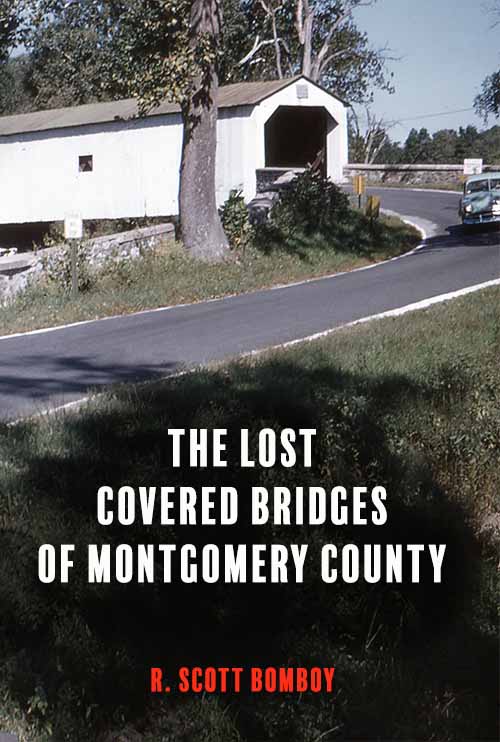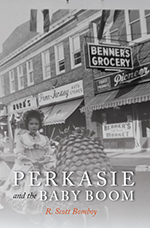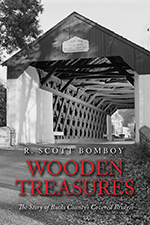On May 30, 1892, Perkasie’s new amusement park, Menlo Park, officially opened to the public. Today, its only remaining attraction is the historic Perkasie Carousel. But Menlo Park, in some form, has been a part of Perkasie’s culture since the Victorian era.
An investment group led by Samuel R. “Dick” Kramer, Grier Scheetz and Isaac Groff bought the land for the park and started hosting picnics and events there in the summer of 1891. The first event at Menlo Park was held by the Evangelical Association in June 1891, when a camp-meeting was conducted on its grounds. (The group had split from the Perkasie Park Association and would later open Highland Park in Sellersville.)
In September 1891, the group announced the park’s formal opening would be delayed until amusements could be added for the 1892 season. In November, the Menlo Park Association said a $5,500 carousel would be purchased and installed the following April. And in January 1892, architect Milton Bean started working on plans for the park’s buildings. By February, the association filed to form a corporation to maintain “a public park, affording facilities for skating, boating, trotting, and other innocent, or athletic sports, and tor the preservation of game and fish.”
In April 1892, the association started promoting its opening, to take place at end of Perkasie’s first Decoration Day parade on May 30, 1892. Their plans were temporarily derailed when the park’s boats were vandalized. Kramer and the association also had a test opening on Saturday, May 28, 1892, being careful to not have any activities at the park on Sunday.
Opening day was everything the association had wished for. About 5,000 visitors came to Menlo Park that Monday. The big parade started at the park at 10:00 a.m. The procession featured a half-mile of carriages decorated with flags and bunting. By early afternoon, the park was jammed with people.
“People flocked to Menlo Park, where they enjoyed its opening exercises to its full measure, the park was scarcely able to cope with such a crowd, but everything went off nicely and without accident,” said the Perkasie Central News. “The romantic boating grounds were covered with merry lads and lassies, and the merry-go-round was a scene of such activity as was new to our neighborhood. Despite the threatening clouds no rain fell, and the day will long be remembered by those who took part in its exercises.”
During its first season, Sunday school picnics, boating, baseball contests, bicycle races, and band concerts were featured at Menlo Park until September. That month, large group of Philadelphia iron workers came to Perkasie on three excursion trains, and despite some fears, “not a drop of liquor” was seen during their visit.
The park closed for the season on September 24, 1892 after it held an employee picnic. “During the time not a disturbance of any kind occurred; not an accident of serious nature; not an arrest; and not a dissatisfied person went away from the park. The tradespeople of Perkasie and Sellersville have had their business stimulated bv the attendance at Menlo Park and have reasons to feel gratified at its advent,” the association said. It also estimated Menlo Park had 100,000 visitors for its first season.
In the following years, Menlo Park had its ups and downs. After the Victorian age, the park struggled to remain in business until a later owner, Henry Wilson, invested in a large swimming pool in the late 1930s, using money he got by selling land to Perkasie Borough to create Lenape Park. The park remained a popular place for people to spend time enjoying amusements, dancing and listening to music.
When Wilson retired in 1955, he sold the facility to Perkasie Borough in 1955 after voters easily approved the acquisition in a referendum. (Wilson turned down offers from land developers for his property, to ensure it remained a public property.)
In 1955, Royal Pants executive Maurice Neinkin donated $25,000 of the $115,000 purchase price to ensure children had reasonable access to the park’s pool facilities. The Borough later removed the park’s casino building and picnic tables in 1964, leaving the pool and the park’s second carousel as the only remaining parts of the facility.
Today, a new pool has replaced the old pool and a library sits were the casino building once stood. The historic carousel location remains, and the current carousel has remained in service since 1951.
But Menlo Park will always have a place in Perkasie’s history as the Borough’s crown jewel in the Victorian era and the scene of many of its most significant events for decades.









